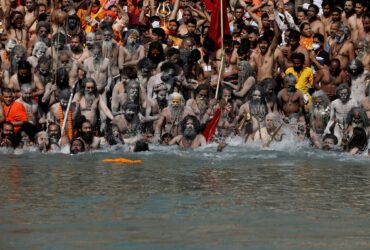NEW DELHI — The second wave of the virus has taken India by storm, with the country now setting the record for the greatest number of cases recorded by any country since the start of the pandemic last year.
In the past week alone, the country has seen a million cases, taking its total tally to 17.3 million.
Even though the sudden spread of the virus can be partly blamed on the new, more aggressive B.1.617 variant of the virus, Prime Minister Narendra Modi’s government has to be held accountable for the way it has handled the situation.
A warning was issued in early February by several doctors urging the government to be prepared for a situation like this when the country saw a dip in the daily cases. Instead of making preparations, the idea the virus was abating was spread by the government.
Himanta Biswa Sharma, the Health Minister of the State of Assam and also a member of the Bhartiya Janta Party, told media agencies there is no need to wear masks in the state of Assam as COVID had gone. The state of Assam currently has more than 200,000 active cases.
India is recording more than 300,000 new cases on a daily basis and the medical infrastructure has been unable to cope up with these numbers. The B.1.617, being a more aggressive strain reduces the oxygen levels of the affected drastically, making them urgently require an oxygen concentrator, which hospitals have been unable to provide.
The government reassured the residents there is enough oxygen in the country, however, the live situation remains something else.
At a time when a national lockdown should have been announced by the central government, the Prime Minister left the responsibility to state governments, with most of the states deciding to go for night and weekend curfews.
The government also has been unable to do anything about the Kumbh Mela, which is still ongoing in the state of Uttarakhand and plans to go on until April 30.

Naga Sadhus, or Hindu holy men, take a holy dip in the Ganges River during Shahi Snan at "Kumbh Mela", or the Pitcher Festival, in Haridwar, Uttarakhand, earlier this month despite the pandemic. Photo credit: REUTERS/Anushree Fadnavis/File Photo
Since the government has been unable to do much during these times, the youth of the country stepped up and took social media by storm.
Social media platforms such as Twitter and Instagram were used to circulate locations of places that had oxygen cylinders and available ICU beds for those in need.
However, on April 26, Twitter revealed the government made an emergency order to censor tweets.
Even though Twitter refused to specify the content that was taken down, media reports suggest these tweets held Modi directly accountable for the COVID deaths, and another tweet criticizing him for holding political rallies while cases increased across the country.
The only little glimmer of hope, in the past few weeks, comes from the international community when it stepped up to help the country curb this crisis.
U.S. President Joe Biden lifted the ban preventing raw materials for vaccines to be exported to India, desperately required for production, while the United Kingdom has begun exporting ventilators and oxygen cylinders which are said to arrive by Tuesday.
“WHO is doing everything we can, providing critical equipment and supplies, including thousands of oxygen concentrators, prefabricated mobile field hospitals and laboratory supplies,” World Health Organization chief Adhanom Ghebreyesus Tedros told a briefing on Monday.
He described India’s situation as “beyond heartbreaking.”
